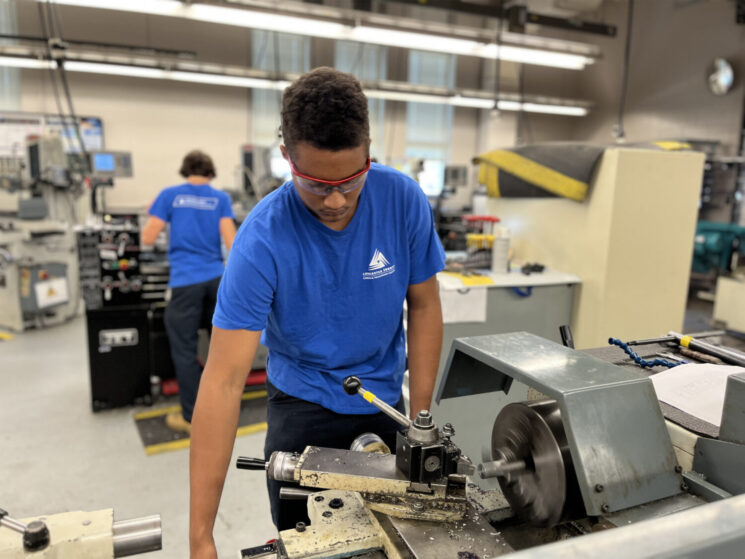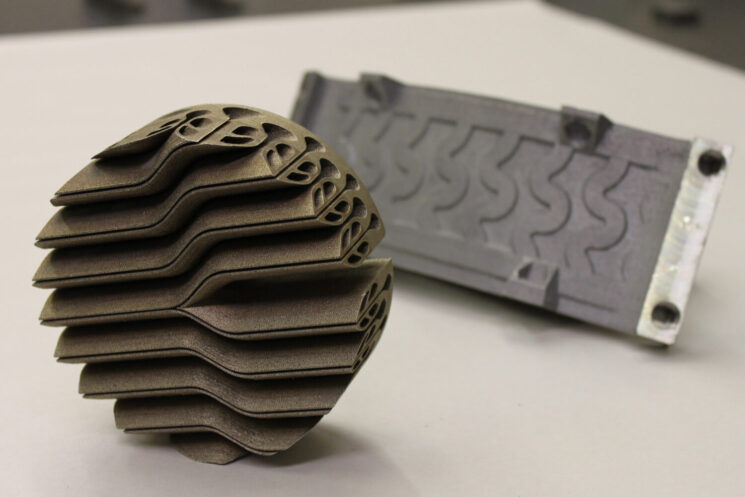In this article, we explore the crucial role that precision plays in the production process and the techniques used to achieve it. We delve into the advancements in technology that have revolutionized precision fabrication and examine the common challenges faced in this field.
Through case studies of exemplary projects, we showcase the awe-inspiring results that can be achieved when precision becomes an art form.
In This Post
The Importance of Precision in Fabrication
Precision is paramount in the field of fabrication, as it ensures the accurate and meticulous construction of intricate components and structures. The benefits of accuracy fabrication in various industries are manifold.
First and foremost, it leads to higher product quality and reliability, reducing the need for rework or repairs. This, in turn, enhances customer satisfaction and builds trust in the brand.
Additionally, precision fabrication improves efficiency by minimizing material waste, optimizing production fabrication time, and reducing costs.
To achieve accuracy in production processes, several strategies can be employed. Implementing advanced technologies such as computer-aided design (CAD) and computer numerical control (CNC) machining enables precise measurements and consistent results.
Regular calibration and maintenance of equipment also play a crucial role in ensuring accuracy. Furthermore, investing in skilled and trained personnel, along with stringent quality control measures, enhances precision in fabrication processes.
Key Techniques for Achieving Precision

To ensure the utmost precision in fabrication processes, it is essential to employ specific techniques that guarantee accuracy and consistency in the construction of intricate components and structures.
Precision measurement is a crucial aspect of achieving accuracy in fabrication. This involves the use of advanced tools and equipment to measure dimensions, angles, and tolerances with great accuracy.
Quality control is another key technique that ensures consistency in production. It involves a systematic process of inspecting and testing components and structures to ensure they meet specified requirements and standards. Quality control measures can include visual inspections, non-destructive testing, and documentation of inspection results.
The Role of Technology
Technology plays a pivotal role in achieving precision in fabrication processes, enabling manufacturers to streamline operations, enhance accuracy, and optimize efficiency.
Advanced machinery and robotic automation have revolutionized the manufacturing industry by offering unprecedented levels of accuracy and control. These technologies have significantly reduced human errors and variability, resulting in higher-quality products and increased productivity.
Advanced machinery, such as CNC (Computer Numerical Control) machines, leverages computerized systems to precisely execute complex fabrication tasks with minimal human intervention.
Robotic automation, on the other hand, utilizes programmable robots to perform repetitive and intricate tasks with unmatched accuracy and speed.
Common Challenges

Achieving precision in production processes comes with its fair share of challenges, as manufacturers navigate complex variables and intricate tasks to ensure consistent quality and efficiency.
Two key challenges in precision production are quality control and accurate machining. Quality control involves implementing rigorous testing and inspection procedures to detect any defects or deviations from specifications. This ensures that the final product meets the required standards and customer expectations.
Precision machining, on the other hand, involves the use of advanced tools and techniques to create intricate parts with tight tolerances. This requires skilled operators and sophisticated machinery to accurately cut, shape, and finish components.
Overcoming these challenges requires a combination of technical expertise, attention to detail, and continuous improvement in processes and equipment.
Case Studies: Exemplary Precision Fabrication Projects
In the realm of precision fabrication, there have been several exemplary projects that showcase the artistry and skill required to achieve flawless results. These projects stand as testaments to the exquisite craftsmanship and innovative design that can be achieved through accurate production techniques.
One such project is the construction of the Burj Khalifa in Dubai, the tallest building in the world. The fabrication techniques employed in the creation of its intricate metalwork and glass panels allow for the seamless integration of the building’s design elements.
Another notable project is the production of the Tesla Model S, an electric car known for its sleek design and high performance. The precision fabrication of the car’s body panels and interior components ensures a seamless and visually appealing finish.
These case studies serve as inspiration for future precision fabrication projects, highlighting the importance of craftsmanship and innovation in achieving exceptional results.
Frequently Asked Questions (FAQ)

What Are the Different Types of Metals Used in Precision Fabrication?
There are various types of alloys used in precision fabrication, including stainless steel, aluminum, titanium, and brass. Precision production offers advantages such as high accuracy, excellent quality control, and the ability to produce complex and intricate designs.
How Does It Contribute to Cost Savings in the Manufacturing Process?
Precision fabrication contributes to cost savings in the manufacturing process through increased efficiency. By using precise measurements and techniques, wastage of materials is minimized, reducing production costs. Additionally, precise production ensures higher quality products, reducing the need for rework and associated expenses.
What Are the Key Factors to Consider When Selecting a Partner?
When selecting a precision fabrication partner, several key factors should be considered. These include the partner’s expertise and experience in accuracy fabrication, their track record of delivering high-quality products, their ability to meet deadlines, and their commitment to continuous improvement. By carefully evaluating these factors, businesses can ensure they choose a partner that will provide the benefits of precision fabrication, such as increased efficiency, reduced waste, and improved product quality.
Can These Techniques Be Applied to Non-Metal Materials?
Exploring non-metal materials for precision fabrication involves applying advanced techniques used in metal fabrication to materials such as plastics, ceramics, and composites. This presents both advantages, such as increased design flexibility, and challenges, such as material compatibility and process optimization.
What Are the Potential Risks Associated With Precision Fabrication and How Can They Be Mitigated?
Potential risks associated with precision production include material defects, equipment malfunctions, and human errors. These risks can be mitigated through regular equipment maintenance, quality control checks, and employee training programs to ensure adherence to proper fabrication procedures.